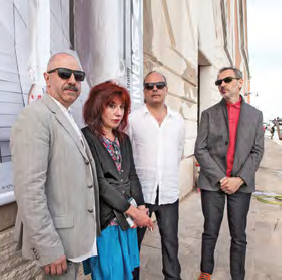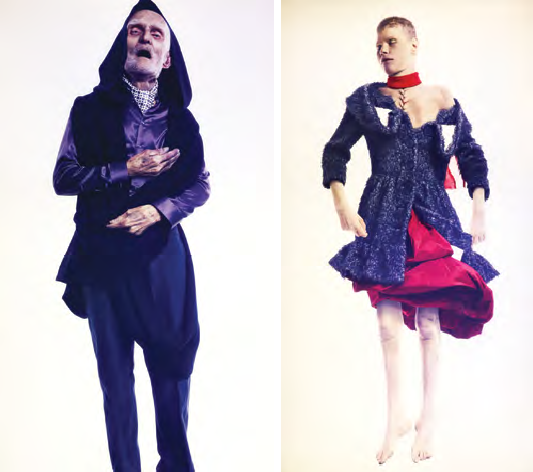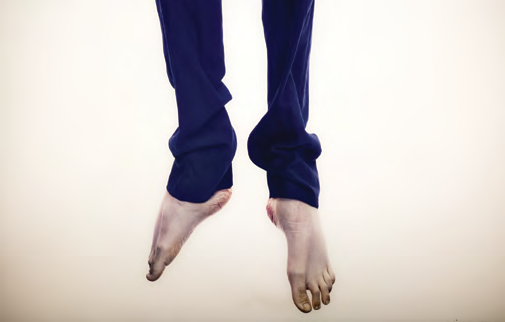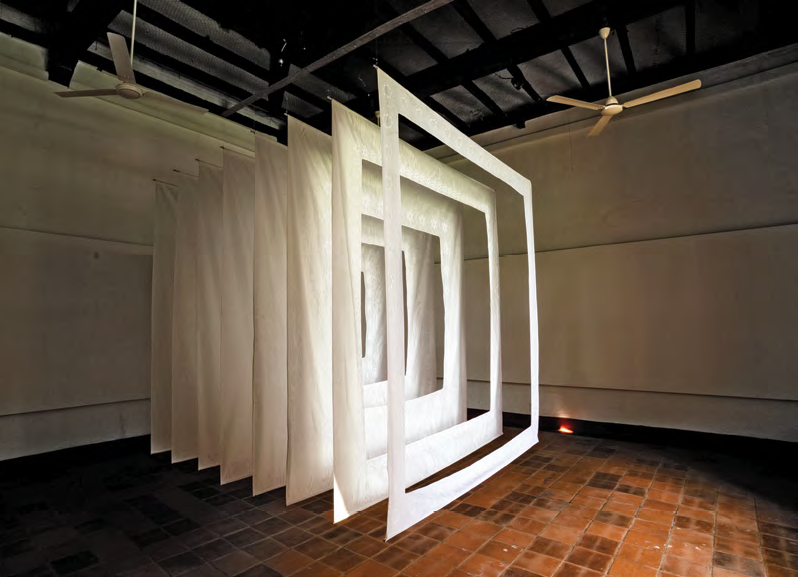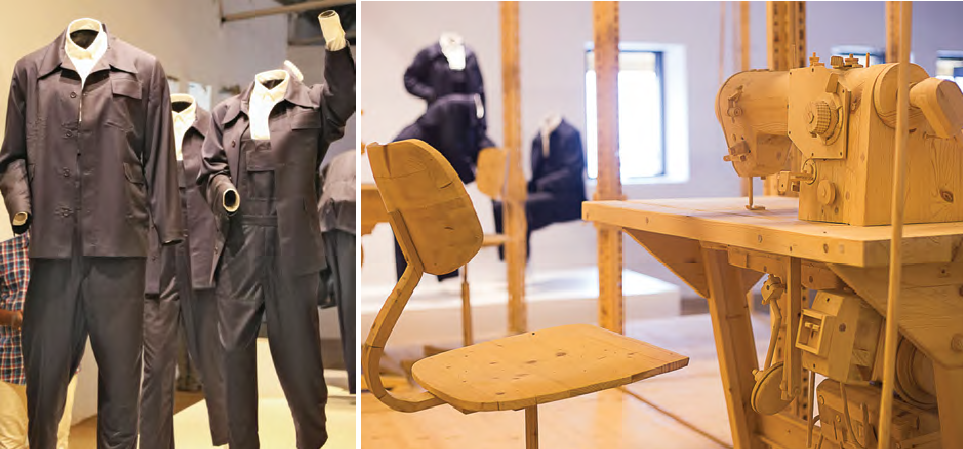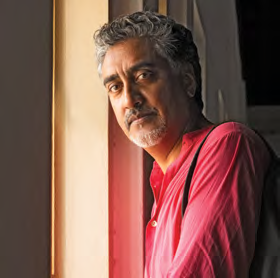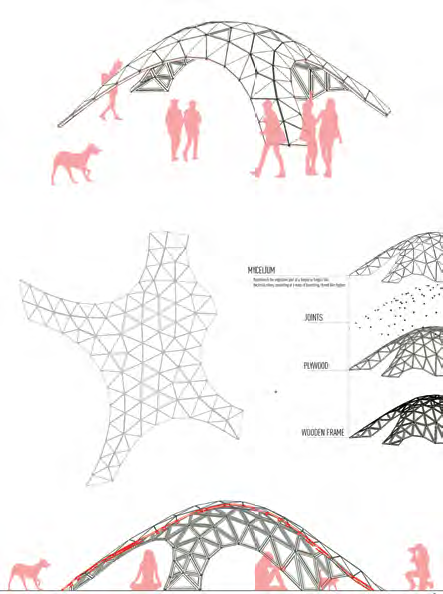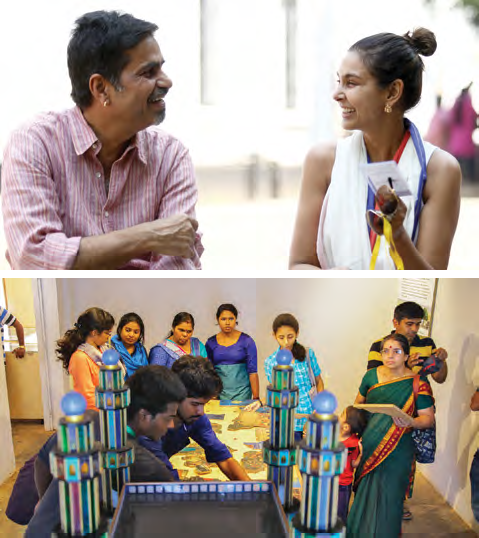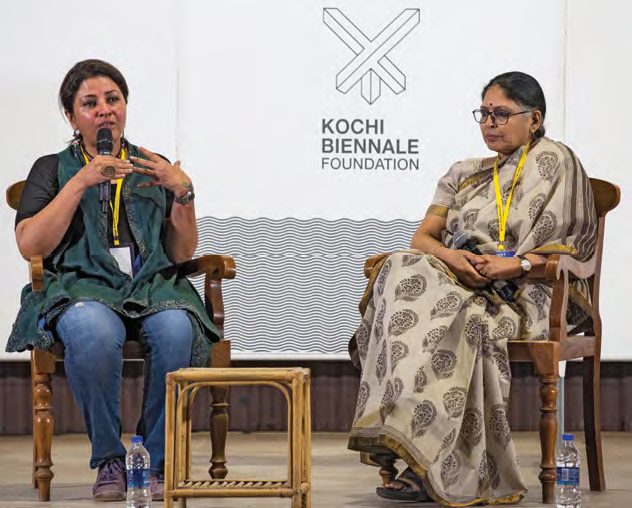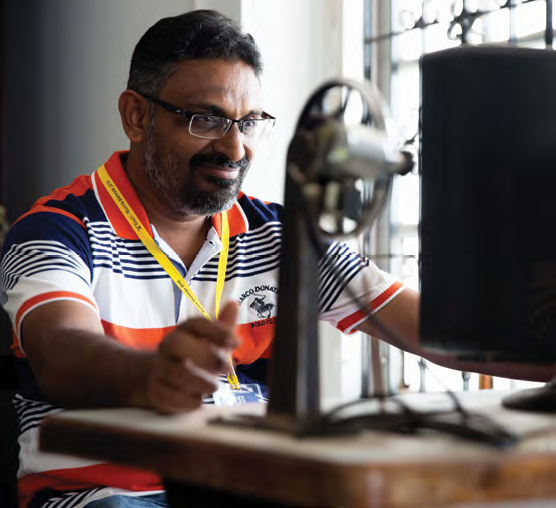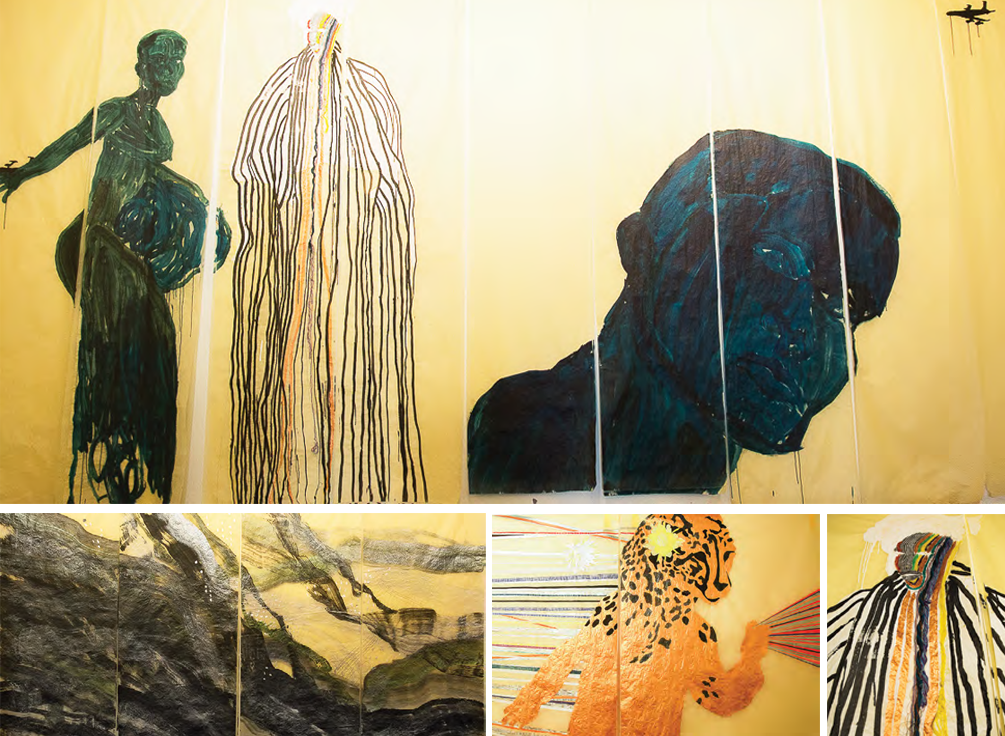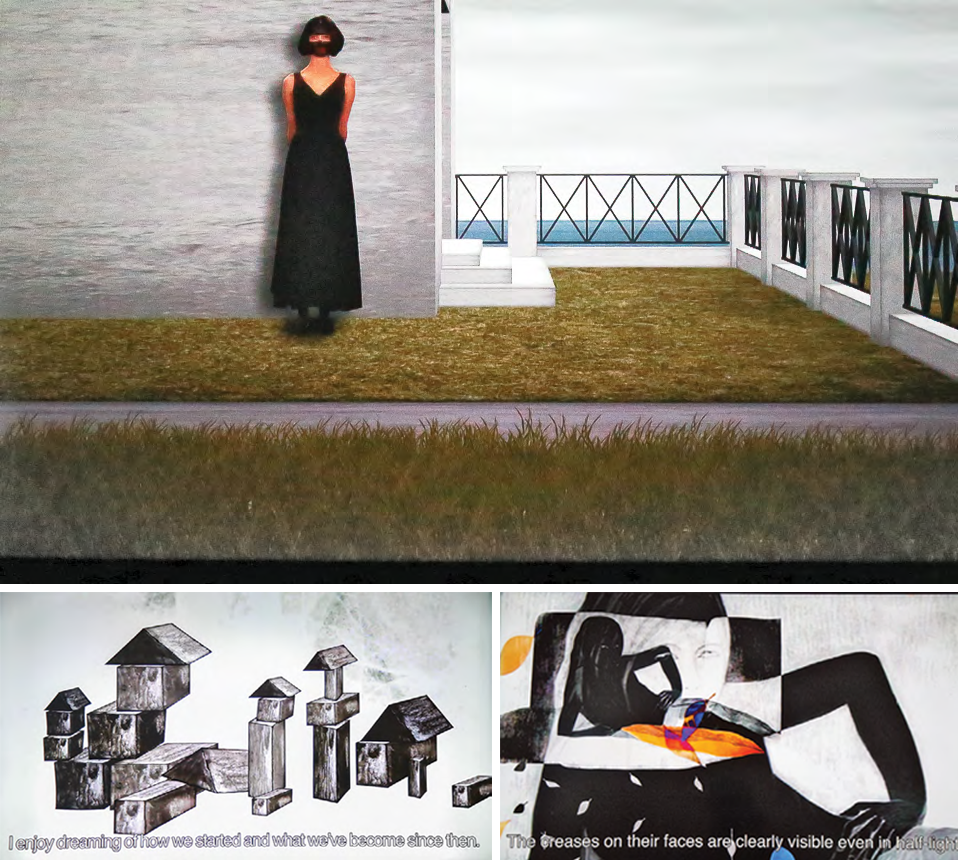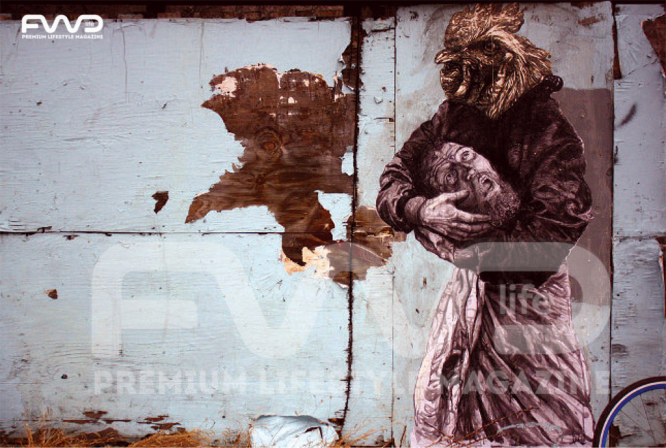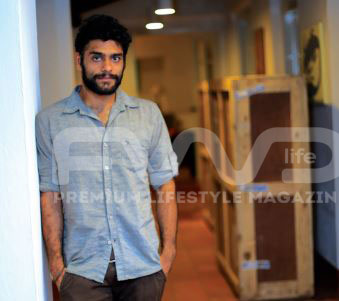The post Kochi Muziris Biennale: Curators of the art appeared first on FWD Life | The Premium Lifestyle Magazine |.
]]>Words: Susmitha Suresh Images: Various Sources
What the Kochi-Muziris Biennale brought to Kochi was a reawakening of culture, art and enthusiasm in the field. When it first opened its doors to public in 2012, it was the first of its kind to be held in India. The exhibition takes place in spaces across Kochi and surrounding areas. The third and latest edition of the KMB came to a conclusion on 29th March 2017.
In 2010, the then culture minister of Kerala M.A Baby approached Bose Krishnamachari and Riyaz Komu, two Mumbai based contemporary artists of Kerala origin, with an idea to start an art project of international standards in the state. And thus was born a legacy that has reached its fourth edition now.
FWD Life made a list of all the curators who brought their unique views to the KMB to make it one of the best biennales in Asia.
Bose Krishnamachari and Riyaz Komu

Bose: Born in 1963, at a village near Angamaly in Kerala, Bose Krishnamachari is an acclaimed painter and curator based out of Mumbai. Having graduated out of the Sir JJ School of Art, he has exhibited his work across the world and won numerous awards. His work comprises of abstract paintings, figurative drawings, sculpture, photography, multimedia installations and architecture. He is the founding member and President of the Kochi Biennale Foundation.
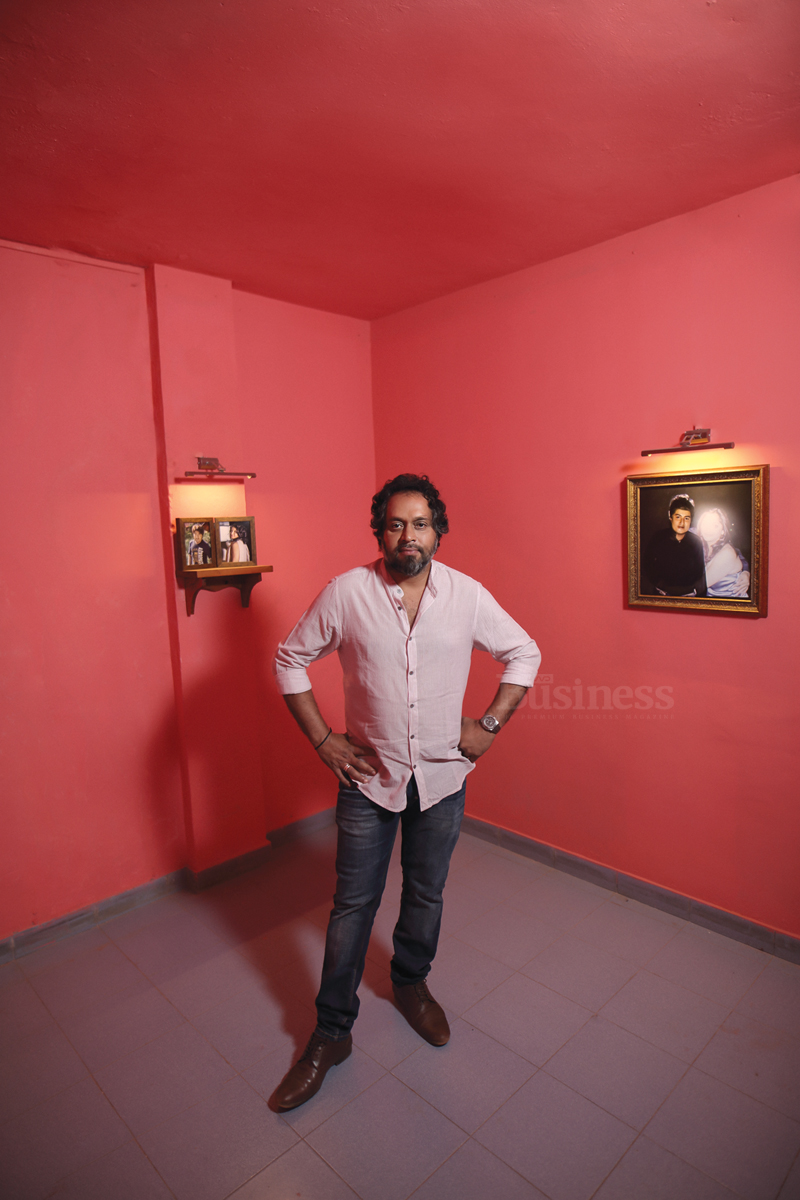
Riyaz: Riyas Komu was born in 1971 near Thrissur in Kerala. He moved to Mumbai to study literature but dropped out to pursue an education in Fine Arts from the Sir JJ School of Art in 1999. As an artist, Riyas’ work spans different mediums and genres and is noted for his political overtones, as a symbol of protest. He is the current Director of Programmes of the Kochi-Muziris Biennale.
Jitish Kallat:
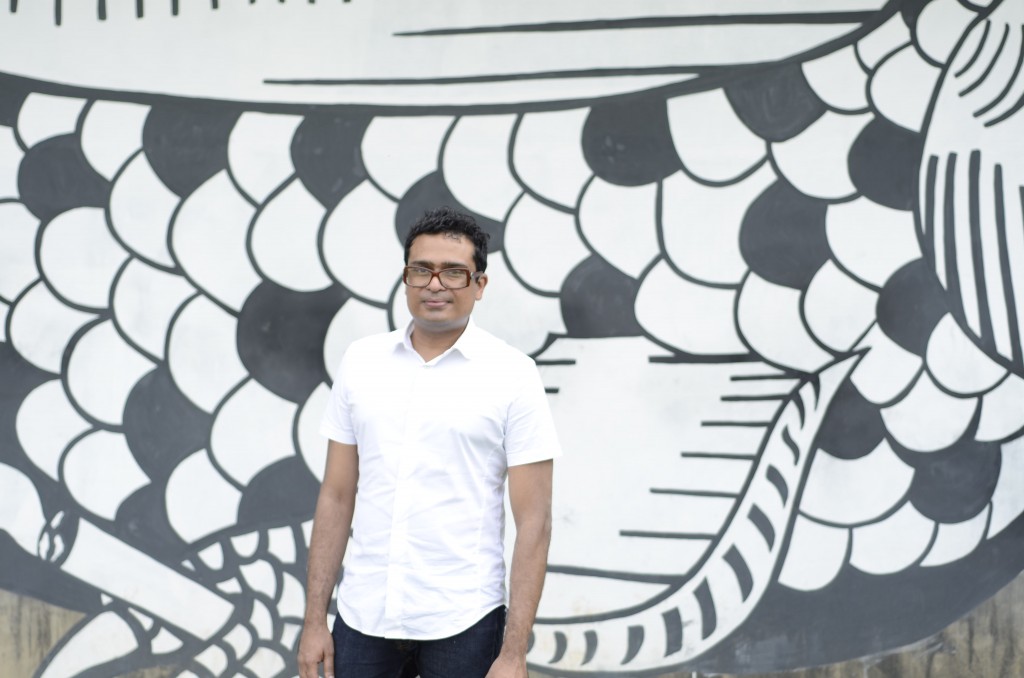
Jitish Kallat was born 1974 is an Indian contemporary artist.He currently lives and works in Mumbai, India.Kallat’s work includes painting, photography, collage, sculptures, installations and multimedia works. He was the artistic director of the second edition of the Kochi-Muziris Biennale, held in Fort Kochi in 2014. Kallat is currently represented by Nature Morte -New Delhi, Chemould Prescott Road- Mumbai, ARNDT – Berlin and Galerie Daniel Templon in France and Belgium and he currently sits on the Board of Trustees of the India Foundation for the Arts.
Sudarshan Shetty:
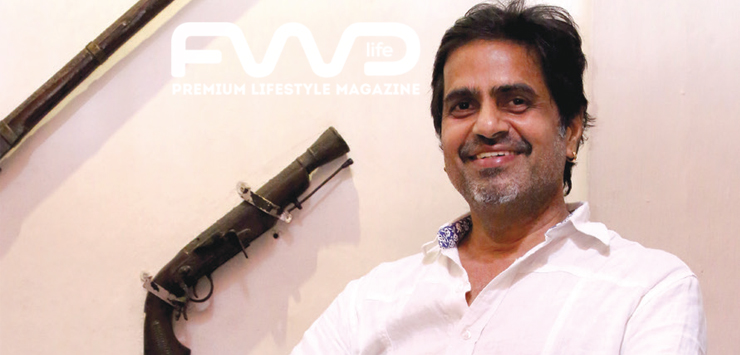
Sudarshan Shetty, born in 1961, is a contemporary Indian artist who has worked in painting, sculpture, installation, video, sound and performance. He has exhibited widely in India and more recently he has become increasingly visible on the international stage as an important voice in contemporary art. His work has been exhibited at the Fukuoka Asian Art Museum, Fukuoka, Japan, and the Tate Modern, London, England.[citation needed] The artist has been a resident at the Mattress Factory, Pittsburgh, United States, and was a Ford Foundation Fellow at the New School for General Studies, New York.
Anita Dube:
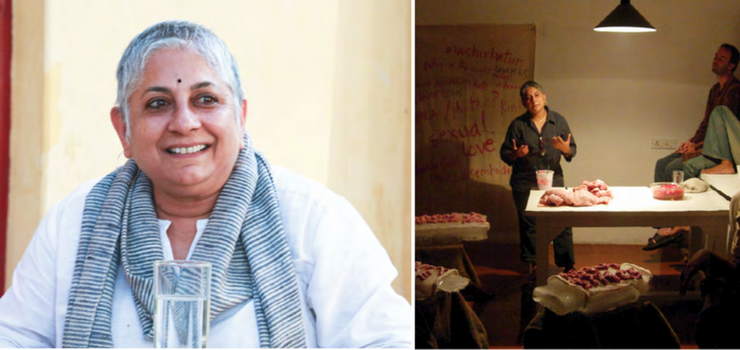
Queer, feminist, radical, dauntless, evocative and provocative, she may be all of 4 ft 10 inches in height, but her ideals, her opinions, her muses and most of all, her conceptually rich politically charged oeuvre stands tall and towering, all cloaked in their skins of velvet. Anita Dube, the Biennale’s first woman curator has already got the art world biting their nails in excitement as they wait to see what she has in store for the next edition, waiting to get the slightest clue of the direction in which her curatorial vision is heading and hastily marking their calendars for December 12, 2018.
The post Kochi Muziris Biennale: Curators of the art appeared first on FWD Life | The Premium Lifestyle Magazine |.
]]>The post How Various Aspects Of The Fashion Industry Inspired These Four Artists appeared first on FWD Life | The Premium Lifestyle Magazine |.
]]>Text: FWD Media Photos: Shan S H
AES+F
AES+F was formed in 1987 by conceptual architects Tatiana Arzamasova and Lev Evzovich with multidisciplinary designer Evgeny Svyatsky and with the later addition of photographer Vladimir Fridkes.
Défilé 2000-2007
This work explores the temporality of existence by juxtaposing two phenomena that have always been “expressions of time – death and fashion”. AES+F, over the course of years, generated this work by dressing corpses in (what was then) high fashion. AES+F also seems to be making the obvious connection between “fast fashion” obsessed with the prediction of trends and the satisfaction of consumerism, and its damaging, deadly effect on the planet.
Dana Awartani
In philosophical tandem with traditional Islamic arts, Awartani finds a universal language of beauty and harmony within the geometric structure of natural and manmade forms.
Love is my Law, Love is my Faith 2016
Dana Awartani used hand embroidered silk to create the eight hangings that are inspired by eight love poems by Ibn Arabi. She draws from her heritage and uses geometry and mathematics which have influenced traditional art in the Islamic world. In this work, she combines tradition, spirituality and an exploration of that ageless human quest for love.
István Csákány
István Csákány lives and works in Budapest where he studied at the Hungarian Academy of Fine Arts. Csákány creates sculptural installations from simple building materials of wood and concrete and is concerned with ideas of memory and monumentalism.
Ghost Keeping (detail) 2012
The exposed structure of this installation seems to dissect the textile factory to its bare, skeletal bones. It seems to reference the mass production involved with a fashion industry preoccupied with minimising costs. The headlessness of the accompanying mannequins also appears to denote the loss of individuality and personal freedom in the pursuit of mass produced trends.
Desmond Lazaro
Lazaro’s work centers around dilemmas of identity as he explores a cultural duality. Lazaro uses ancient artistic traditions and techniques to present contemporary subjects.
Family Portraits 2016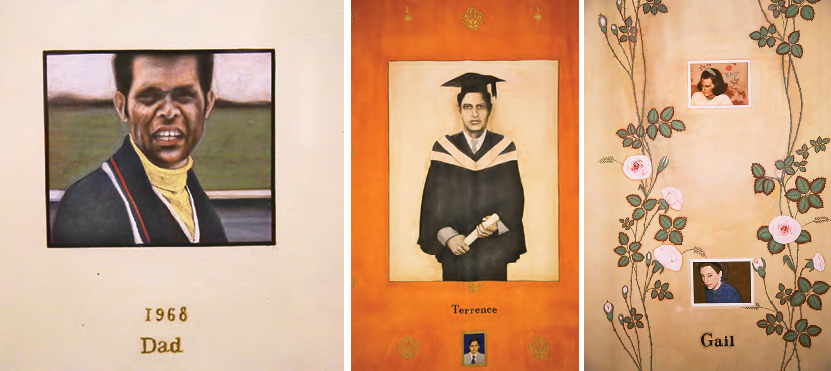
In this mixed media installation, the artist uses private archives and public records to explore his ancestry as he traces earlier generations of his family to Rangoon, Madras, Leeds and Liverpool. The installation seems to journey into the past, from video to an icon embossed in gold leaf, as the artist re-presents his personal history and tries to establish what it is to belong.
Digital version : https://goo.gl/HGTOLN
The post How Various Aspects Of The Fashion Industry Inspired These Four Artists appeared first on FWD Life | The Premium Lifestyle Magazine |.
]]>The post The Degradation Movement Manifesto appeared first on FWD Life | The Premium Lifestyle Magazine |.
]]>Text: Maria John Images: Various sources
In an era of concrete jungles and overcrowded cities, degradability, sustainability and liability becomes a part of the responsibility of architecture. It is an innovation in the field of biology and architecture, a concept that stresses the need for temporariness. Mycelium is the vegetative part of a fungus like mushrooms and it is being touted for the first time in India, as a possible building block. FWD met the architects of this movement to discover why this is a key concept, and to know more on their installation at the Kochi Muziris Biennale.
Planting a seed
The Shell Mycelium installation at the MAP Project space at the Dutch Warehouse as a Kochi Muziris Biennale Collateral, was the work of Kochi based architect Asif Rahman of Beetles 3.3 (B3.3), Spanish architect Giambattista Arredia of Yassin and Lebanese architect Mohamad Yassin of Yassin Arredia Design (YAD). The team met at Barcelona at the IAAC masters programme and were introduced to Mycotecture by inventor-artist Philip Ross, who has been studying mushrooms with fast growing mycelia as building material, claiming that they could be stronger than concrete. The three architects were fascinated by this concept as they had been discussing the nature of building and humans.


“Architecture is a permanent sign in any territory. During major events like the Olympic games, expos, FIFA world cups, multiple structures are constructed. In most of the cases the structures constructed are permanent, making use of heavy construction material. Many of the structures are erected as a sign of the prosperity and strength of a nation’s economy and the cities unconsciously pay the price. At the end of the event, after the entire world has danced and celebrated, the city remains a scarred body, devoid of life. We criticize these unconscious political choices, with living buildings that arise from nature and return to nature, as though they never existed.”
Taking Root
The architects wanted to bring the idea to the Kochi Muziris Biennale to begin conversations on a global platform and conveyed their revolutionary concept with a simple installation made of a wooden structure, plywood and mycelium. Every living thing should go through a lifecycle and this goes for our shelters as well. “The degradation movement in architecture upholds the bio-logic, the logic for a degradable need.”
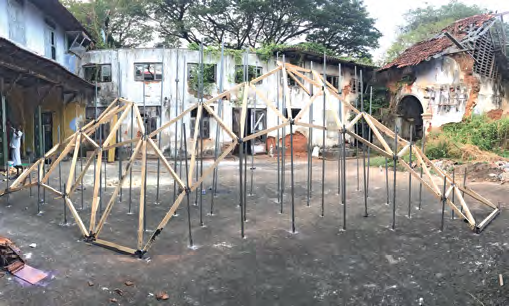
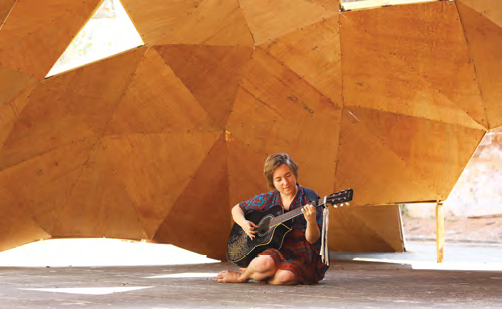
The openness was an invitation to explore and the structure was designed to stand by itself and disintegrate according to their design. “The shell pavilion is a pavilion made of spores and the wooden structure forms the growing ground. The mycelium eat it, merge with it, transform it and grow through it. The pavilion be a building, which after it is born, will grow along with its visitors, and die once its purpose is fulfilled. The only remains left behind are the experience left under it.”
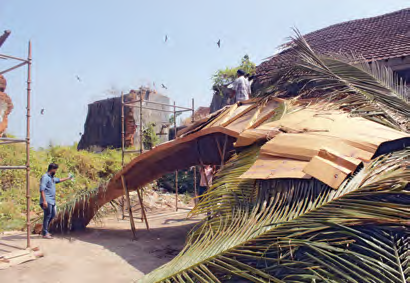

Growing Forward
There are multiple concepts arising from this installation. Research is ongoing to establish mycelium structure as a waterproof and fireproof component, which would make it an ideal building material. They have also been invited by the Beirut University Architecture Department to present a course on the degradation movement. The beauty of the installation from Beetles 3.3 and Yassin Arredia Design is the creation of moments between art, society and architecture. A living installation that shows that everything that is born must grow and then die. The Shell Mycelium was an artistic expression of degradation. It questions the status quo and opens up the door to new sustainable possibilities.
Digital version : https://goo.gl/HGTOLN
The post The Degradation Movement Manifesto appeared first on FWD Life | The Premium Lifestyle Magazine |.
]]>The post Kochi Muziris Biennale 2016 ends, curator for KMB 2018 announced appeared first on FWD Life | The Premium Lifestyle Magazine |.
]]>As the Kochi Muziris Biennale 2016 comes to an end, at Durbar Hall Ground on March 29, it is with great sorrow that Kochi bids farewell to one of the world’s best art exhibitions that has helped put the city on the global art map. The event began with Co-Founder Riyas Komu’s speech, who spoke about the foundation and their aims and achievements, and said “Where KMB 2012 marked the birth of a new movement in the history of Indian contemporary art, KMB 2016 reasserted Kochi’s position as a site for insights and a place for multiple concerns and perspectives.”

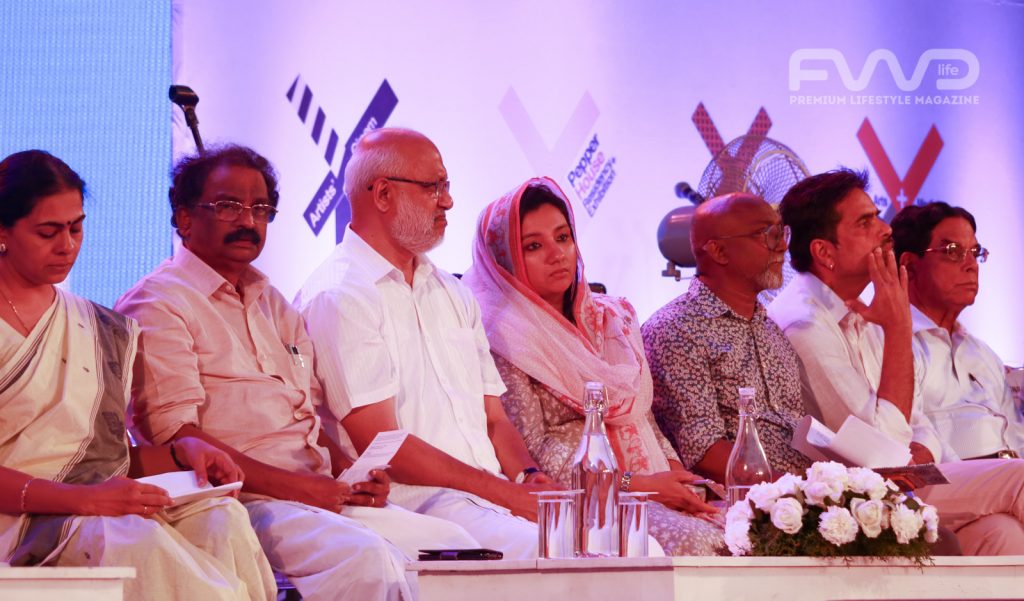
With the closing ceremony, the curator for the next edition of the Kochi Muziris Biennale was announced by Shri A K Balan. Anita Dube will take over the curatorial functions for the 2018 Kochi Muziris Biennale. The selection is in keeping with the Biennale’s long-standing tradition of being an artist-led exhibition. Anita is an Indian contemporary artist, who completed her BA in History from the University of Delhi. Dube had her training as an art historian in Baroda, which later shifted to Kerala.
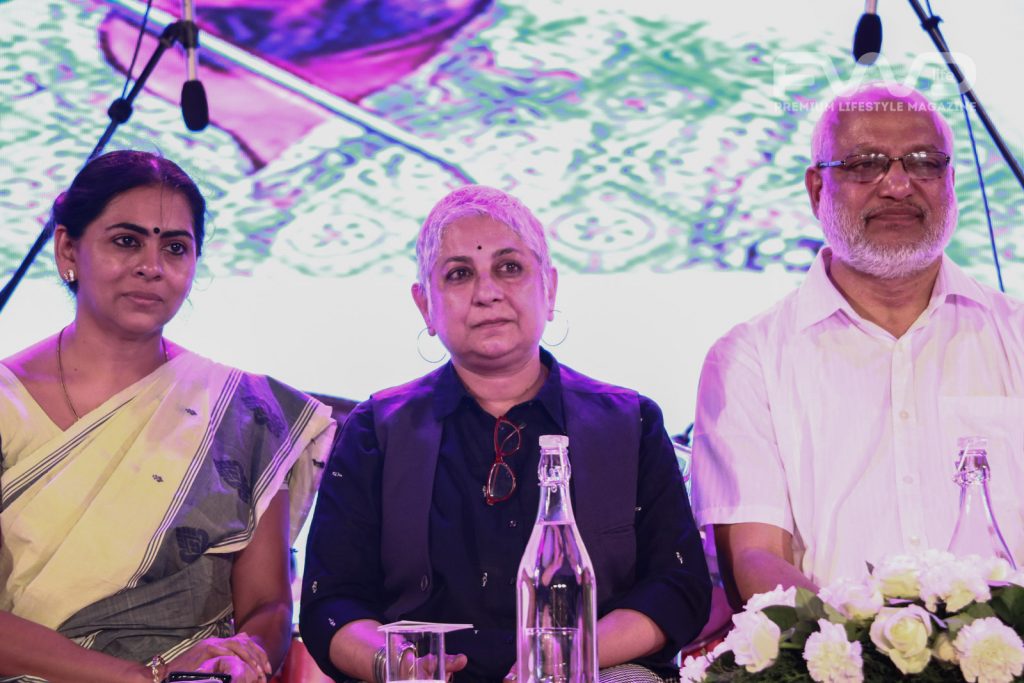
Her aesthetic idiom, in many ways, reflects her background as a member of the Indian Radical Painters and Sculptors Association – a short-lived but hugely influential collection of artists and art students who rebelled against what they perceived to be the commodification of art in India. Dube is also a board member at KHOJ, an international artists’ association she co-founded in 1997 in New Delhi. Over two decades, the initiative that began as a modest annual workshop has become one of the most important platforms shining a global spotlight on South Asian art, organising and hosting international ‘itinerant’ workshops, residencies and exhibitions.
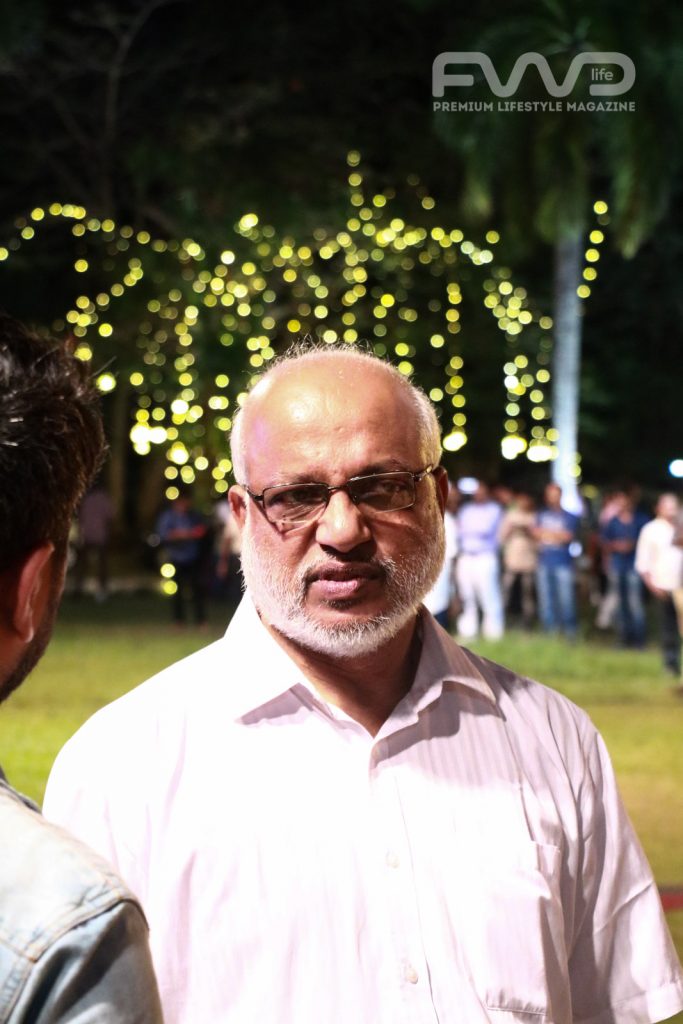
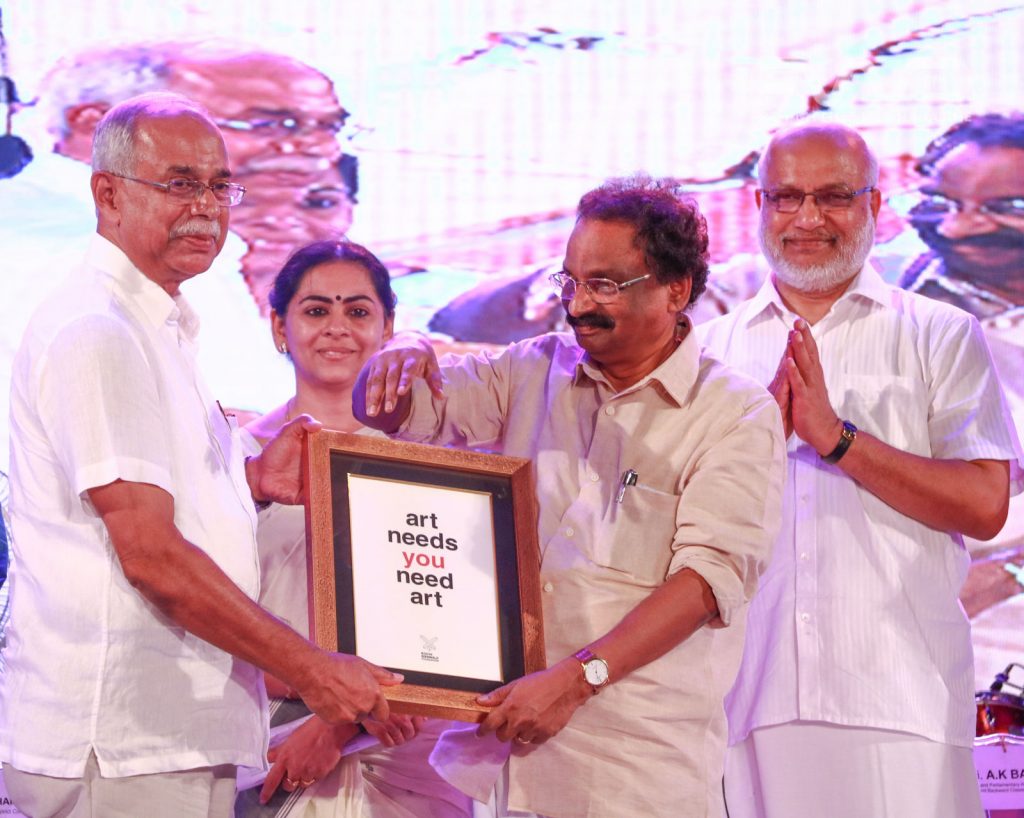
With a vote of thanks by Bose Krishnamachari, Co- Founder and President of the Kochi Biennale Foundation, the closing ceremony came to an end. “The KMB is a ‘People’s Biennale – both in terms of its attendance and its engagement with the public. Just as we begin together, we end together.” he said, during his speech. After the ceremony, the audience were in for a royal treat as two famous bands, Suraj Mani and Thaikkudam Bridge performed for the crowd at Durbar Hall.

Images: FWD Media
The post Kochi Muziris Biennale 2016 ends, curator for KMB 2018 announced appeared first on FWD Life | The Premium Lifestyle Magazine |.
]]>The post Cine Icon Padmasree Mammootty visits Kochi Muziris Biennale appeared first on FWD Life | The Premium Lifestyle Magazine |.
]]>Following a guided tour through the installations at Aspinwall, the primary Biennale venue, the actor and three-time National Film Award winner Padmasree Mammootty said “Besides the usual paintings and drawings on canvas that we think art to be, the works displayed here inspire us to seek art from our surroundings and nature. The Biennale is an event that provokes the viewers to seek more from an art work.”
When asked about the permanent allotment of a venue for the Biennale, the actor said “The scenario of a permanent venue enables the possibility of conducting more art forms like cinema, drama, and dance during the interval between Biennales, thus adding a greater scope and wider reach.” He also suggested that the Biennale organisers include artists who follow traditional practices and not just postmodern art. Mammootty was highly impressed by Kerala artist KR Sunil’s photo series on port city Ponnani.
Images: Various sources
The post Cine Icon Padmasree Mammootty visits Kochi Muziris Biennale appeared first on FWD Life | The Premium Lifestyle Magazine |.
]]>The post Kochi Muziris Biennale : When Art & Women Mingle appeared first on FWD Life | The Premium Lifestyle Magazine |.
]]>Words by Rheanna Mathews Photographs from Various Sources
Before the Kochi-Muziris Biennale (KMB) first came to town, most of us looked at art as something for the elite, layered with meaning that the layperson had no hope of deciphering. Apart from being lauded for its consistent curatorial energy and its position in the vanguard of modern art, the People’s Biennale has mingled with its city and her people, becoming something we await and experience with much enthusiasm. There is an increased awareness of the art world, artists and their versatile media of expression. 31 of the 97 artists that this edition of the KMB brought to us from 36 countries across the world are women. This makes for only 32% of the total number of participating artists and one ponders the cause for this skewed ratio. Is misogyny rampant in the art world too, or has patriarchy been true all this while and are women simply not good enough? The former seems untrue of the KBF which has young, vibrant Manju Sara Rajan and Treessa Jaifer as its CEO and CFO respectively, and the latter is laughable. However, it is possible that systemic patriarchy inhibits most women from pursuing art as a career.
Eruption of Expressions
The knowledge that any ‘medium can be converted to art’ resounds at the ongoing biennale where artists have used different media in their artwork. Dana Awartani, for instance, uses her art to revive interest in dying traditional textile practices and draws on her rich heritage of Islamic geometry and poetry, embroidering delicately intricate patterns on silk, layering meaning and tradition. Caroline Duchatelet explores the interplay of light and landscape, portraying the passage of time and contemplating questions about the recognition of images. Éva Magyarósi, whose installation is a combination of drawings and video, looks at the conversion of thoughts into an artwork and the mingling of dreams and lived experiences. Wura-Natasha Ogunji, known for the wide spectrum of media she employs in her art, has chosen to present four works on trace paper, the thread work in which invokes the feminine in a public space.
Giving Voice
Art as a medium of expression, be it therapeutic or an extension of the cosmos, was largely denied to women for a long while. However, today, as evidenced at the third edition of the KMB, women have claimed space, ever growing, for themselves in the creative world. Not only this, women have learned to use art as a vehicle for change. Social activist and designer, Lakshmi Menon, who initiated her Pen Drive with KBM, as a collateral, was able to create increased awareness of the ills of the unthinking use of plastic disposable pens. The Jana Natya Manch, one of Delhi’s oldest theatre groups, in keeping with the nonconformist traditions of street theatre, chose to depict everyday incidents that women are forced to face and accept as matters of course, in their The Faces of Violence (Yeh Bhi Hinsa Hai). The cathartic reactions of the crowds at different locations were proof of the effect the third theatre, brought outside the proscenium, can have on the public. ‘Indian Cinema: A Female Narrative’ curated by Bina Paul as part of the Artists’ Cinema initiative of the KBF explores whether a particular narrative style arises when it’s a woman behind the camera. Lyari Notes, an Indo-Pak production, directed by Miriam Chandy Menacherry from Mumbai and Maheen Zia from Karachi, is a documentary about four girls living in the titular Karachi district of Lyari and learning music despite the violence and the threatening situations that surround them.
When Art Burns Inside
The KMB had a role to play at the social level too. At the ‘Varayude Penma’ art outreach initiative run by the KBF with Kudumbasree, it was found that the participant women, although they’d been artistically active in their childhoods, had to give up that part of themselves once they grew older, as the teasing, and sometimes derision, of friends, neighbours and at times, even family inhibited any artistic inclinations they might have indulged in. The workshop, however, has rekindled their love for art and moreover, has made them realise that “any medium can be converted to art”. The Foundation has also been actively involved with schools and hospitals to further the cause of making art inclusive.
Engaging with Art
If one subscribes to the notion that all good art is political, then it follows that art needs an audience – one that understands and engages with it. In January, a unique workshop was held for 25 participants, to help them overturn the traditional idea of art mediation where ‘experts’ explain artworks to laypersons. Lena Eriksson, a lecturer at the Hochschule Luzern, Switzerland, explained how these new practices attempt to bridge the artwork and the people from different backgrounds who approach it. The KMB has been conducting a series of workshops and lectures at its various venues, mainly at the Cabral Yard Pavilion.
An Audience Beyond Par
When Mallika Sarabhai visited the KMB, she opined that the Biennale was how art was meant to be showcased, that it had become a fixture in India’s cultural landscape, and observed that there seemed to be more women artists and performances this time round. She approved of how the content of the artworks determined the language in which they were portrayed. Lisa Ray, actress, activist and aspiring writer, who found the KMB a fount of inspiration, said that one had to strengthen oneself to experience some of the works at the biennale. Social activist and Magsaysay Award winner Aruna Roy commended the KMB, for it “allows spaces of tolerance and freedom of expression for perspectives different from ours and discovering extraordinary new languages in terms of visual arts and other forms of artistic expression.” And writer K.R. Meera appreciated “the spirit of inclusivity in Sudarshan Shetty’s curatorial vision”. Internationally renowned critics, curators and celebrities have come down to this little town in Kerala to take part in what is a cultural landmark for the country.
The third edition of the Kochi-Muziris Biennale undoubtedly has brought art to the people and remains true to its epithet, ‘the People’s Biennale’. As a space for the expression of differing, controversial and thought-provoking voices, the biennale, with its dedicated triumvirate – Bose Krishnamachari, Riyas Komu (of the Kochi Biennale Foundation) and Curator, Sudarshan Shetty – seems to be living up to its purpose.
Wura-Natasha Ogunji
Place: Nigeria.
Art Type/Medium: Graphite, ink, thread, coloured pencil, acrylic on trace paper.
Exhibits at the Biennale: Ballast 2016 Cheetah 2016 Ballast 2011 View from Atlantis 2015.
Her art is known for its versatility. It brings to focus different aspects of the feminine domain and draws them into an Afropolitan space. Inherently feminist, she uses her work, fantastical and fabular and yet factual, to explore the presence of the female in the public space.
Éva Magyarósi
Place: Hungary.
Art Type/Medium: Video series, drawing performance, video animation, pencil on paper.
Exhibits at the Biennale: Tough dreams born – the unalterable consequence of existing 2016-17 Lena 2009 The Princesses Are Afraid of Zebras 2009.
Also known for the versatility of her artwork, she makes an almost epistemological examination of the transition of thought, intangible and elusive, into art, concrete and visible. The dreamlike quality and the scenery of her video animation seems to blur lines between the dreams and lived experiences of women.
The post Kochi Muziris Biennale : When Art & Women Mingle appeared first on FWD Life | The Premium Lifestyle Magazine |.
]]>The post 50 Shades of Bose appeared first on FWD Life | The Premium Lifestyle Magazine |.
]]>In an exclusive with FWD, Bose opens up about his extensive collection. Settled on the cane sofa inside the Media Centre at Kochi Muziris Biennale, he was sporting a plastic and stainless steel mixed frame that he picked up from a museum in Chicago. He loves his collection and he’s a happy man knowing that he’s the only one with such eccentric, crazy frames and they’re one of a kind, literally. He carries at least 6 frames with him if he’s traveling for a long period, and if he’s going for a 2-day trip, he takes a change of frame with him.
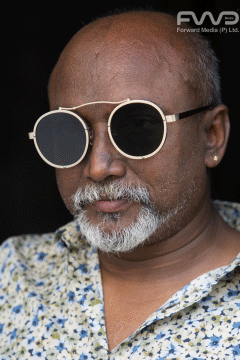
When I asked him if he’s ever traveled abroad just to pick up a particular frame, he said he doesn’t plan trips just to satiate his needs for unique frames, but when he visits museums, he stops at their shops and picks up unique frames.Bose says he prefers museums to regular shops because they have a better collection. If the design appeals to him, he picks it up, provided he can afford it. He’s collected frames from Dubai, Venice, and Vietnam, to mention a few.
His collection craze doesn’t just stop at frames. He loves watches, though he doesn’t really wear one. His favorite watch is one by Issey Miyake, a Japanese fashion designer. Being an artist himself, it doesn’t surprise me when he says he also collects art. The art has to appeal to him. When he wants to support an artist, or when he sees potential in them, he makes sure to buy their work and also encourages them to make more art.
The post 50 Shades of Bose appeared first on FWD Life | The Premium Lifestyle Magazine |.
]]>The post Beyond A Canvas : Gaia appeared first on FWD Life | The Premium Lifestyle Magazine |.
]]>Your earliest memory when you dabbled with a pencil?
I was a small child in preschool but only took my talent for copying life on paper seriously when I had to make a decision about college.
Any particular reason why you choose people and animals as your subject?
I started doing work on the streets under the influence of Elbowtoe and Swoon that I encountered outside and online. The initial works were hybridized figures drawing loosely from notions of mythology and were rooted in a kind of romanticism that has arisen from the awareness of environmental degradation.
There is a lot of usage of light and shade and strokes. Is it deliberately used to give a dramatic effect?
My original works from which I have transitioned were all created using the stamp technique of linoleum block printing. Prints derived from such a medium heightened the prominence of the line, and thus I developed my compositions with loose and bold strokes.
An art piece that questioned your abilities?
One of my more challenging piece of work was creating a seven story mural in Istanbul. It adequately balanced the demands of my host institution, the Pera Museum, and my collaborative partner, the activist group Workers’ Families in Pursuit of Justice. Not only was the surface of the building difficult to tackle, but I was given only three days to finish the effort. Furthermore, I wanted to create a memorial to those that have lost their lives in labor murders in Turkey without being alienating to the viewer.
Do you get inspired by other artists? If so, who are they and why?
Of course, I continue to be inspired by Swoon, not only because of her incredible craftsmanship and imaginative installations, but also because of her commitment to reallocate resources from the market towards humanitarian projects. Alfredo Jaar is also an artist whose interventions and public commissions serve as a standard to strive beyond the painted metaphor.
When you travel around the world, what are the tiny things that you’d look for which could be seen in your works?
I derive my inspiration entirely from the place. Sourcing the rhythms of architecture, community identity, people’s history, and microeconomic realities, I strive to create a representation that resonates with its environment. Once in a while, I will add suggestions as the mural unfolds as an input from pedestrians and neighbors arise while painting.
Is there any dream project that you have in mind and a dream place where you’d want to do that piece of art?
I want to visit Chandigarh and respond to its modernist environment. In a similar vein I would also love to paint in Brasilia.
The post Beyond A Canvas : Gaia appeared first on FWD Life | The Premium Lifestyle Magazine |.
]]>The post Biennale’s Space for Art appeared first on FWD Life | The Premium Lifestyle Magazine |.
]]>At the moment Kochi is bursting with the anticipation of the Biennale. Artists have taken residence at the varied venues and there are pots of paint, paper, clay, and laterite and such bringing to life color, form and feeling.
The venues are as important as the artwork, given birth by the colourful history of the region. Nature and time has carved Fort Kochi into the tourist hub that it is today.
It was in the year 1314 that the great flood swept the port of Muziris away into history. The floods shifted the natural harbor from Muziri to Kochi. “The birth of a child and death of the mother” says Bonny Thomas. There were no road systems in the region and hence water was the main mode of transport. Spices from the Western Ghats were taken in boats down the Periyar River and eventually to the Vembanad Lake. Being well connected through a network of waterways that we still see today, Kochi flourished.
Its popularity resulted in a fight to own the land by the Portuguese, Dutch and the British. Stories of explorers, businessmen, soldiers, slaves, poets, lovers etc are hidden in the walls of Fort Kochi. The spirit of colonial architecture is captured in the sweeping colonnades, wide verandahs and vast halls. While the regional flavours are abundant in the laterite walls, wooden windows and intricate detailing. Worldwide, the Biennale strives to preserve the cultural heritage of the city it’s named for. The Kochi Muziris Biennale holds onto the past through its historically important venues that have stood the test of time.
ASPINWALL HOUSE
This 19th century building was owned by Oughterson, Campbell and Company which dealt in ship building and timber trade. Built on the banks of the ‘kayal’, the building is one of the largest heritage properties here. In 1846, Aspinwall was bought by the Scott brothers who were joined by John H Aspinwall. The new addition to the company expanded the trade to include spices and other agro products. Aspinwall was a popular Municipal Chairman and brought a lot of change to the area. On his death, the company passed many hands to later end up in despair. It is amazing to know that one of the most important trade centers in the area is now the largest art center for the Biennale as sixty percent of the works are displayed here.
PEPPER HOUSE
The Pepper House is situated in Kalvatty, where Kochi developed as a port and spice center. Spices were traded here by various ethnicities including Chinese and Arabs. This go-down is a testament to the fact that architecture is both aesthetic and functional. The Pepper House is situated between the river and the road. The building is formed like a ‘naalukettu.’ It has two big gates (kavaadam) on the eastern and western sides.
The boats would dock on the river side on the east of the building from where the raw spices would be delivered. Then it was processed and dried in the central yard. Sacks of fragrant spices were then stored and moved out onto the road to be taken to the market.
DAVID HALL
To the west of the Parade Ground is the David Hall. In the 1660s the Dutch were the most important traders in the area after the Portuguese. The Dutch had a good rapport with the Jews who were the middlemen in the trading. The Hall belonged to a Jew, David Koder and is now owned by a premium hotel company. The three foot wide laterite walls uphold the massive tiled roof that sweeps down supported by wooden trusses. Huge windows bring in light and ventilation to the rectangular building. David Hall has been renovated many times and is now a vibrant contemporary art gallery with an attached café.
This little café is a very popular hangout in Fort Kochi. Showcasing various contemporary artists throughout the year, it shows that great architecture exists in small spaces. The café opens inward into a little courtyard that brings in light and air. The ambience is Indian contemporary with red-oxide seating that run along the walls. The space is not strictly linear but turns into a comfortable corner where light filters through green plants. The scale of Kashi inspires discussions in a comfortable environment.
DURBAR HALL
The 180 year old building used to be where the King of Kochi held his parliament. The area was under the royal family and was surrounded by the temple, a small palace, courts, secretariat and other royal offices. After World War II, the building was used to keep battle tankers and hence the road came to be known as Tankshed Palace road. Though the building was built by the King, it is heavily influenced by European architecture. The sweeping wooden staircase and the detailed ceilings have seen many uses over the ages. After being used as a government office, the building was converted into the Pareekshith Thampuran museum. The Lalitha Kala Academy then handed it over to the Biennale and today it is a gallery of international standards with a well-stocked art library.
The post Biennale’s Space for Art appeared first on FWD Life | The Premium Lifestyle Magazine |.
]]>The post Sahej Rahal’s Clay Art-From Biennale appeared first on FWD Life | The Premium Lifestyle Magazine |.
]]>From a conversation about Star Trek to the book, Brief Interviews with Hideous men by David Foster Wallace, I knew this interview was bound to have a few surprises. Earlier a painter, he’s had a tricky time moulding a relationship with clay.
Biennale awaits a game of pretence. All I can say is that it’s a visit to a laboratory- contradictory to Dexter’s though.
Tell us a little about this laboratory, does it arise from your subconscious?
The laboratory, it immediately calls out for precision. But mine pokes fun at the idea of one and you assume you are going to look at serious art. It’s all toys, and the fun is to make the sense of this. I was inspired by sci-fi and predictions written during the cold war. About the subconscious, (he breaks into a laugh) I don’t engage with psychoanalysis. The origins of thoughts sitting in the nebula of subconscious mind are a limited way to go about it. A lot of it just comes with everything that’s around you. You are constantly assimilating things. I do feel that I haven’t engaged with that dealing of art, but for me it’s more of a cultural sphere that enters in you.
A flight from banality as we visit your space, are we going to see a few quirks like Marcel Duchamp’s (in reference to his famous art work, Fountain) in the laboratory?
(He laughs) I haven’t put any urinals, probably lion heads! Earlier, I was talking about cinema. Aspin Wall has been a stage to so many firms. I have been taking left-overs from the sets and designing the after-life of the virtual cinema. You’ll see fun objects that you think have lost value and suddenly has an importance from our past and future. It’s all about play and pretence.
You are creating ruins of the future with that of the past, quite a paradox isn’t it?
I am making a huge set of roads leading to Muziris, an absent city. It stands out in a map with historical data pointed towards it, but we do not know where it is or even its civilization. The idea of that paradox becomes a framework for imagining this lost future. Taking old things and focusing on the materiality of things and getting them to pretend to be someone else. It does get into the murky territory of pretending. Isn’t that what you do with clay?
You’ve framed a concept of attaching to things that one has detached from what was the thought process behind it?
I am kind of fascinated with the concept of value, it brings a certain aura. It will affect you in a visceral meaning. What’s fun for me is making the game of giving a meaning on a civilizational level. There are a lot of things that you may be taking seriously, poking fun on how we make meaning of past or what’s yet to come. These questions thrown out on how authentic things are or where in history do you place them?
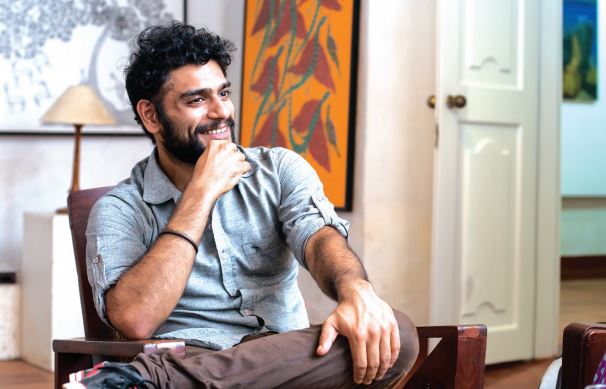
Despite being in the presence of ruins there’s a parallel route to an interpretation, isn’t it?
It is this absurd mess that navigates the viewer, the space of it being chaotic helps you clear your mind. In Schopenhauer’s philosophy, we build the universe in our existence not in a magical way, but we make sense of it in a conversation. To look at the process and how we interpret our ruins is the conversation I want with the viewer.
Magic realism seems to be prevalent in your art, the inspiration… I really enjoy Marquez’s, Carlos Carlos Fuentes’s and Isabelle Allende’s writing (we draw the association of his clay artwork to her writing, And of Clay We are Created.) In Jorge Borges’s writing, he gives you piece of conversation and you have to figure out the story on your own, and frame multiple options. How words move around and conjure to a prose is what I look for in art- be engaged and inspired. Making sense is a part of our cultural domain. That’s what magic realism does.
What’s the element of magic in Biennale?
I am thrilled to work in Atul Dodiya’s space. His decoupage was a sensorium of images from Bollywood to David Hockney and Goddard. Jitish Kallat talked about the Biennale being an in between space – just like when you attend a lecture and you go out in between for a couple of drinks. The concept of Biennale is like mashwaro – fil in the atmosphere. It creates a space where you can be laidback and continue in an informal way. Biennale’s ethos tries to break the code of elitism and just enjoy a conversation.
The post Sahej Rahal’s Clay Art-From Biennale appeared first on FWD Life | The Premium Lifestyle Magazine |.
]]>